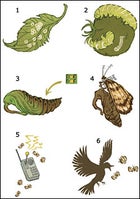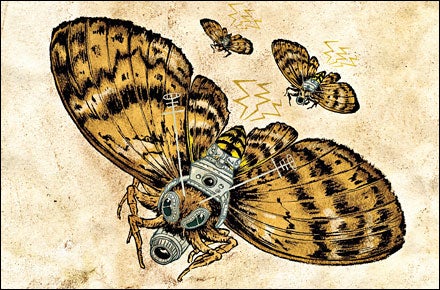We were hoping for something more Terminator-like, but the Department of Defense’s prototype cyborg looks like… well, is a moth. Government-contracted researchers at MIT have implanted the neural systems of Manduca sexta, or the Carolina sphinx, with microchips to control the creatures’ movements and collect and transmit data. This month will see the first test flights, during which researchers will gauge their ability to influence the moths’ speed and direction—and override the instinct to take aim at the nearest streetlamp. They will also be fine-tuning sensors that can convert the insects’ vibrations into power for microcomputers. The plan is eventually to mount the bugs with surveillance equipment for use in reconnaissance missions in places too risky for human agents—like Iran and the closets of civil libertarians.
Government Surveillance: Moths
 Born for Supremacy. From egg to operative in one month.
Born for Supremacy. From egg to operative in one month.1. Scientists harvest EGGS.
2. The still-innocent caterpillar feasts on a taxpayer-funded buffet of tobacco leaves.
3. Once the larva reaches PUPA stage, scientists implant a microchip into its thorax. This will function as the information hub for the moth’s directional controls and external surveillance gear.
4. A VIDEO CAMERA, GPS system, and air sampler (to detect and identify explosives signatures) are mounted on the adult moth.
5. The fully operational CYBORGS are controlled from up to half a mile away.
6. Possible oversights: BIRDS, bug zappers, and bonfires.


